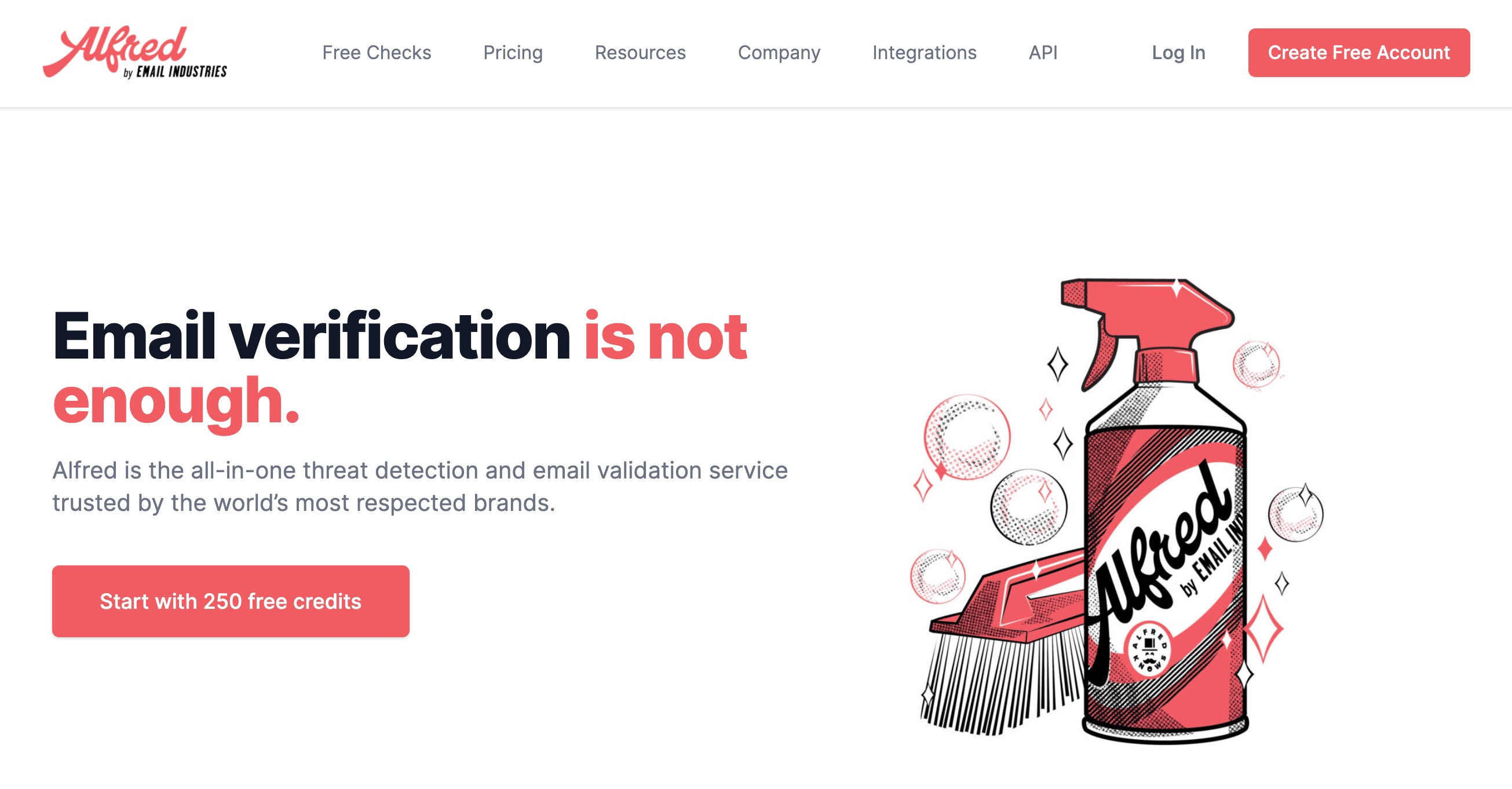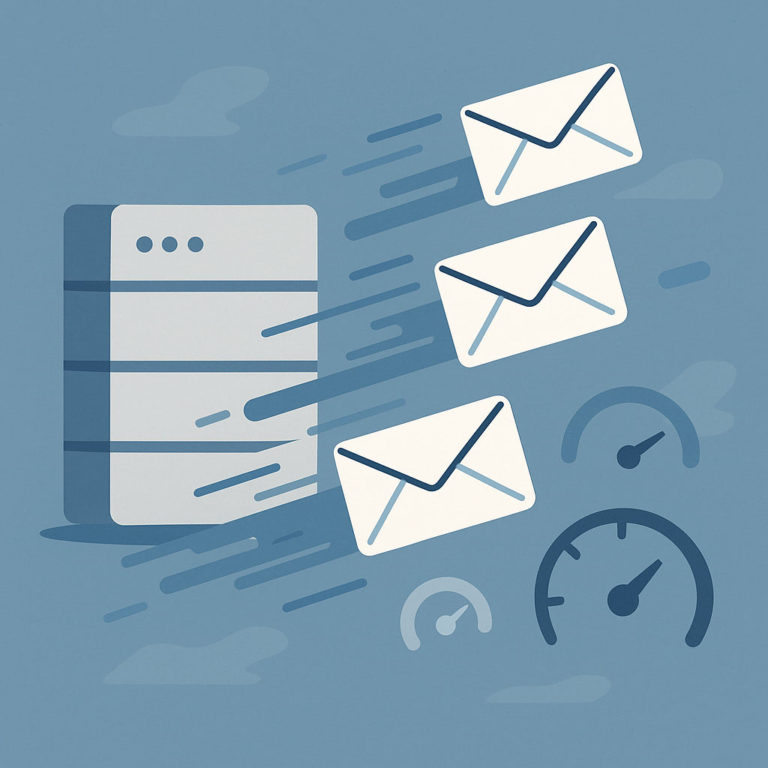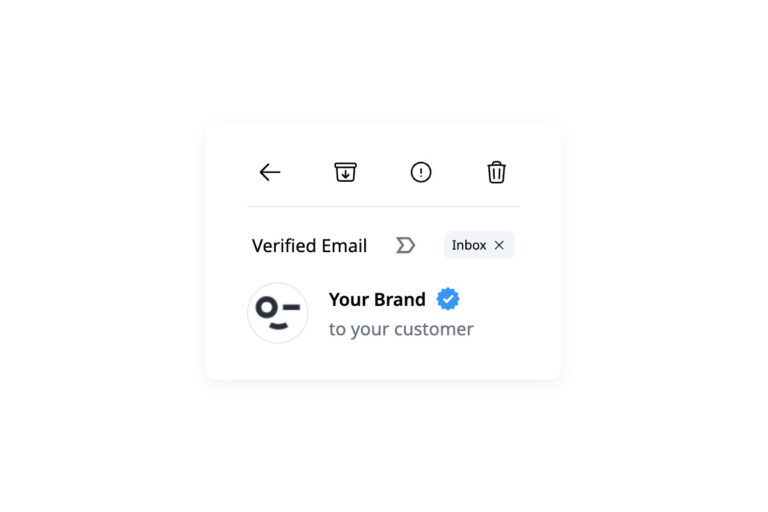Is your email marketing no longer as profitable as it once was? The problem could be to do with your email deliverability.
According to a deliverability benchmark report, 20% of marketing emails fail to arrive in the intended target’s inbox and end up going to the spam folder or getting blocked altogether.

This is a problem for businesses because it means that a huge amount of money is being left on the table in terms of lost advertising profits.
In this guide, we’ll dive into the essentials of email deliverability and its best practices to ensure your business’s emails reach your audience’s inbox rather than their spam folder.
To ensure you make the right decision, I recommend working with professionals and hiring a trustworthy email deliverability service to avoid losing money and ruining your reputation.
Email Deliverability Verifier
What Is Email Deliverability?
Email deliverability is the ability to successfully deliver emails to your subscribers’ inboxes without them being blocked or marked as spam.
Email deliverability is dependent on many factors including:
- Sender reputation: If you have a poor sender reputation due to readers marking your emails as spam, ISPs are less likely to deliver your emails
- Email content: If your emails look like spam because of how they’re formatted or the words contained within, they can trigger spam filters
- Recipient engagement: ISPs are more likely to deliver your emails if readers regularly open and engage with them
- Email list health: Sending to invalid or inactive email addresses will negatively affect your deliverability
- Email authentication: Authenticating your email with protocols like Sender Policy Framework helps ISPs confirm that your emails are genuine and are coming from you
Top Email Deliverability Best Practices
Here are the top email deliverability best practices that you need to know:
Building and Maintaining a Healthy Email List
A healthy email list is key for good email deliverability.
ISPs (Internet Service Providers) are constantly monitoring email activity to protect their users from spam.
And if a large portion of your emails are bouncing back because they were sent to an invalid or non-existent email address, ISPs may start categorizing your emails as spam, negatively impacting your email deliverability.
Another reason why building a healthy email list is so crucial for deliverability is spam complaints.
If your email list is filled with people who have not willingly signed up, they may report your emails as spam, further damaging your sender reputation.
So, how do you build a healthy email list?
Here are some effective ways:
- Enable double opt-in: Your email list should only contain people who genuinely want to receive your emails. Enable double opt-in to require subscribers to confirm their address after they sign up
- Offer valuable content: The content your send to your readers should be valuable (and not just marketing). Consider sending educational content, discounts, or anything else subscribers will find useful or enjoyable
- Clean your email list regularly: It’s a good idea to regularly remove inactive subscribers from your list. ISPs can know whether your users are engaged or not
- Segment your list: Not all subscribers are interested in receiving the same content. Sending relevant emails helps increase engagement
- Use a Welcome Email Series: Sending a series of welcome emails that introduce your brand shows subscribers what they can expect and helps set expectations. Sending welcome emails has also been shown to increase engagement by as much as 33%.
Airbnb is a prime example of a company that has successfully built a healthy email list.
Not only do they use a double opt-in process to ensure that only people who genuinely want to receive their emails are added to their list…

They also regularly provide value to their subscribers by sharing inspiring travel destinations, keeping their list engaged.
Optimizing Your Email Content for Deliverability
As you discovered in the section above, the content of your emails has the ability to harm the health of your email list, indirectly leading to reduced deliverability.
But the content of your emails can also directly affect your email deliverability as well.
Email service providers such as Gmail and Yahoo use filters to scan your emails for any sign of spam, which is why it’s key to avoid using any elements in your emails that could be considered as such.
Here are some email deliverability best practices you need to keep in mind as you’re writing the content of your emails:
Avoid Spammy Subject Lines
Spam filters scrutinize subject lines for spammy words like “free”, “cash”, “urgent”, “win”, “prize”, etc.
If your emails contain words like these, they are more likely to be flagged and therefore it’s a good idea to avoid using them as much as possible.
Avoid Spammy Body Content
Spam filters also scrutinize the content inside your emails, meaning you should also avoid using spammy words in the body of your emails.
And it’s not just text you need to watch out for…
Having a high image-to-text ratio and using suspicious formatting, such as flashy colors, fonts, capital letters, and italics can also increase the risk of your emails being flagged as spam.
This happened to a deals website called Zozi.
They noticed that one of their test emails had failed to arrive in the inbox for more than half of their subscribers.
After researching why their deliverability rate had dropped so sharply, they realized it was because they had linked to a photo that was hosted third-party image hosting site.
After removing the image and launching another test, they found that their email deliverability went back up to 100%.
Personalize Your Emails
Personalized emails are more likely to be opened and lead to better engagement rates.
You can personalize your emails by including the recipient’s name at the top of the email and tailoring the content to their interests.
Netflix excels at this, sending emails that are based on viewer behavior (recommended shows or movies inspired by their viewing history).

They even send you personalized alerts when new seasons of your favorite shows are available, keeping their content relevant, boosting engagement, and reducing the likelihood of their emails being marked as spam.
Use a Non-Spammy CTA
To increase engagement from your list and improve your deliverability, every email you send should have a clear CTA (call-to-action) telling them what action they should take after reading.
Be careful not to make your CTAs too salesy so they don’t trigger spam filters.
Using a hypothetical example from a sustainable clothing line, an effective CTA would be: “Discover more about our new line of sustainable products”.
On the other hand, a less effective CTA in terms of email deliverability would be: “Buy now to get 50% off on all items!”.
Even though it highlights a benefit, it’s also much more likely to trigger spam filters.
Include an Unsubscribe Link
Having a clear and easy way for readers to unsubscribe from your list at the bottom of your emails improves deliverability.
This may seem counterintuitive, but it allows those who are not interested to be taken off your list (and in turn reduces the likelihood of your emails being marked as spam).
Going back to Netflix as an example, here’s how they do it at the bottom of their emails:

Using Email Authentication Techniques
Email authentication is a way of verifying that the emails you send are legitimate.
This facet of email management is important because your internet service provider uses this system to filter out spam or malicious emails.
There are key steps to consider when implementing email authentication:
- Set up SPF (sender policy framework): This process involves creating a record that notifies ISPs who can send emails from your domain. You can set this up by publishing an SPF record in the DNS settings of your domain.
- Implement DKIM (DomainKeys Identified Mail): This authentication method adds a digital signature to outgoing messages. This can be done by following your email provider’s instructions to generate and add a DKIM key to your DNS records.
- Configure DMARC (Domain-based Message Authentication, Reporting and Conformance): DMARC is another layer of security that protects your domain from unauthorized use by specifying what should happen if an email fails the SPF or DKIM checks. You can read our guide here on how to set it up.
Ensuring Your Emails Are Mobile-Friendly
A 2017 study revealed that 41% of emails are opened on mobile devices.

As a result, optimizing your emails for mobile users is crucial in ensuring high engagement rates and boosting your email deliverability.
Using a responsive email design can significantly improve your email’s mobile compatibility.
A responsive email design ensures the content of your email automatically adjusts to fit the screen size of the device it’s being viewed on.
To implement responsive design into your emails, consider using a responsive template and customize it with your own branding.
Starbucks is a good example of a company whose emails are mobile-friendly.
Their emails are responsive (meaning they adapt well to any screen size, whether it’s a smartphone, tablet, or desktop.
They’re also single-column and can be read easily without you having to keep pinching your screen to zoom out.
Here’s an example:

Maintaining a Good Sender Reputation
Your sender reputation is pivotal when it comes to maintaining good email deliverability.
If your sender reputation is low, ISPs will block or divert your emails to the recipient’s spam folder.
Consider this valuable piece of information from the Return Path (now Validity) 2020 Email Deliverability Benchmark report:
According to their analysis, email senders with a reputation score above 90% saw an average of 92% of their emails successfully reach their intended recipient.
But this number dropped all the way down to 72% for senders scoring between 81-90, and tanked even lower still (45%) for senders with a score between 71 and 80.
This analysis goes to show just how important your sender’s reputation is.
So how do you maintain a good sender reputation?
The best thing you can do is to keep complaint rates low by making sure your emails are relevant and non-spammy.
One other important thing to keep in mind is to avoid sending emails to invalid addresses.
Every time an email bounces back, it signals to ISPs that you may not be managing your email list effectively or could be sending spam.
That’s why it’s wise to do as we mentioned earlier and regularly clean non-engaged subscribers from your email list.
Useful Tools to Help You Implement These Email Deliverability Best Practices
There are a number of tools that you can use to assist you in adhering to these email deliverability best practices.
For example, we’ve covered how important it is to regularly clean your email list from invalid email addresses.
Email verification tools like alfred.email can potentially help save you hours by doing that automatically.

We’ve mentioned how it’s important to segment your email list.
Marketing platforms like Mailchimp and Mailpost provide the tools that can help you do that in no time at all.
But for a comprehensive solution that specializes in enhancing deliverability, consider using a service like Unspam.email.
Our “one-stop” email spam checker and deliverability tester provides insights, recommendations, and actionable steps to start improving your email deliverability rates today.
Conclusion
Email deliverability should be a key focus in your email marketing strategy.
The fate of your email marketing—whether your emails are landing in your recipients’ inboxes or are relegated to their spam folders—hinges on it.
For the best results, follow these email deliverability best practices:
- Build and maintain a healthy email list
- Optimize your email content for deliverability
- Use email authentication techniques
- Ensure your emails are mobile friendly
- Maintain a good sender reputation
Implement these best practices today to unleash the true potential of your email marketing campaigns.
FAQs
What Is Email Deliverability?
Email deliverability is simply the ability to successfully deliver emails to the inboxes of your subscribers without them being blocked or marked as spam.
How Can I Improve My Email Deliverability?
You can improve your email deliverability by maintaining a healthy email list, optimizing your email content, using authentication techniques, ensuring mobile-friendliness, and maintaining a good sender reputation.
What Is SPF, DKIM, and DMARC?
SPF, DKIM, and DMARC are email authentication protocols that help ensure the emails you send are recognized as genuine by ISPs.
Why Is Email Deliverability Important?
Email deliverability is critical because it determines whether your emails are landing in your recipients’ inboxes or being “doomed” to their spam folders. This can have a massive impact on your business’s bottom line.





